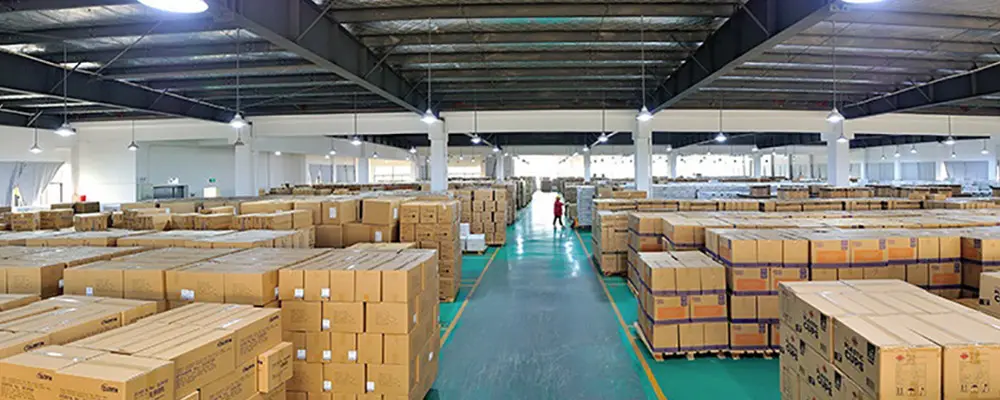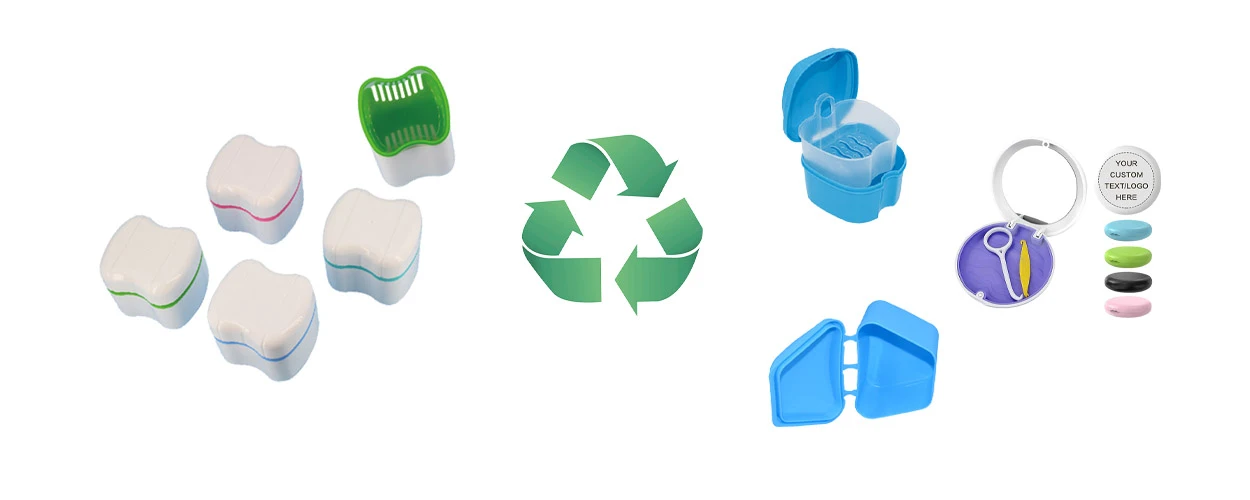In the process of upgrading the oral health care industry, CE-certified denture boxes, which are both medically safe and environmentally friendly, are becoming the industry benchmark. In this paper, we will analyze the sustainable development path of the denture boxes meeting the CE standard from the three dimensions of product function, quality certification and material innovation.
1. Basic function and design evolution of denture box
As a professional oral prosthesis storage device, the denture box needs to meet three core requirements:
- Safety and protection: multi-layer sealing structure to block 99% of environmental contaminants
- Convenience: Mirror-assisted system improves wearing efficiency by 30%.
- Sterilization: integrated filtration layer for daily basic sterilization.
Current mainstream products have been derived from portable models (<80g), intelligent models (temperature and humidity monitoring), medical models (UV disinfection) and other sub-categories, suitable for different use scenarios.
2. Importance of CE certification
CE certification is a symbol of trust and reliability in the European market. It proves that a product has been rigorously tested and meets the basic requirements of health, safety and environmental protection. A denture box that is CE certified means that it is safe for humans, contains no harmful substances and is designed to withstand the demands of dental practice. CE marking ensures that these denture boxes are functional and also meet the highest quality and safety standards.

The Hidden Cost of “Cheap” Non-CE Products
One of my clients, a Portuguese dental hospital, learned a lesson from a painful experience. They purchased low-cost denture boxes from a non-CE certified supplier, and as a result, 43% of the patients complained that there was a chemical smell. A shipment worth €32,000 was also seized by customs for non-compliance with the MDR.
3. Environmentally friendly materials: the first step towards sustainable development
The denture box manufacturing industry is currently in a critical period of material innovation. Traditional ABS plastic, due to its non-recyclable properties, not only requires a natural degradation cycle of more than 450 years, but also contributes to white pollution as it accounts for 23% of the total dental plastic waste. In contrast, CE-approved medical-grade denture boxes are being made from three main types of environmentally friendly materials: bio-based polymers (such as PLA), recycled polypropylene, and medical silicone. The 2023 research report of the European Dental Materials Association shows that denture boxes made of such sustainable materials can reduce the carbon footprint by 57% while maintaining the durability of the equipment (with a service life of more than 5 years). Since denture boxes are making a sustainable and environmentally friendly transformation, what about other dental products? This is what we are going to talk about next.
Material Comparison
| Material Type | Degradation Cycle | Percentage of Recycling | Cost Increase |
| Conventional ABS | 450 Years | 0% | – |
| PLA | 6 months (compost treatment) | 100% | 18% |
| rPP | 2 weeks (compost treatment) | 30% | 7% |

4. Why should dental products shift towards sustainability?
Environmental pressure:
The dental industry generates 5.7 million tons of plastic waste each year, the majority of which comes from disposable products. When these dental supplies are made of non-recyclable plastic, they will become a continuous environmental burden.
Mandatory constraints of policies and regulations:
The EU’s New Plastics Economic Agreement requires that the proportion of recycled materials used exceed 25% by 2025 and implements a carbon footprint traceability mechanism for medical plastic products
Economic benefits and clinical value:
Clinics that use CE-certified eco-friendly materials (such as denture boxes containing 30% recycled PP) reduce plastic waste by 31% and instrument wear and tear by 17%.
The life cycle cost of sustainable products is reduced by 22%, mainly due to: energy-saving production process (40% reduction in water and electricity consumption), closed-loop recycling system reduces raw material procurement cost by 18%.
Industry extension impact:
This transformation has extended from denture boxes to 15 types of dental consumables such as dental floss picks (made of degradable PLA material), impression trays (recycled PETG), and implant packaging (bamboo fiber composite material), forming a green upgrade trend throughout the entire industrial chain.
5. Market Prospects and Challenges
Explosive growth on the demand side:
The global denture box market size is expected to reach 2.74 billion US dollars (CAGR 6.8%) in 2028, and the proportion of the elderly population aged 65 and above will increase to 16.7%, forming the core driving force
The market share of environmentally friendly products is accelerating, among which:
- The annual growth rate of bio-based polymer denture boxes (PLA/PHA) has reached 19.3%
- Demand for smart models (temperature and humidity monitoring + ultraviolet disinfection) surges by 24.5%
EU market access barriers:
- The CE-MDR certification requires a traceability rate of 95% for recycled materials
- The mandatory carbon label system increases the cost of traditional plastic products by 22%
Under the dual drive of the green economy and the silver economy, denture box manufacturers need to break through the development bottleneck by adopting a hybrid model of “environmental protection certification + intelligent services”.

6. Conclusion
Under the double standard of medical safety and environmental protection, denture box manufacturers need to build a three-dimensional development path of “certification endorsement + material innovation + process innovation”. Through strict compliance with the CE certification system to ensure the basic quality of products, with the application of environmentally friendly materials to enhance the competitiveness of sustainable development, and ultimately in the global oral care market of hundreds of billions of dollars to establish technological advantages.



